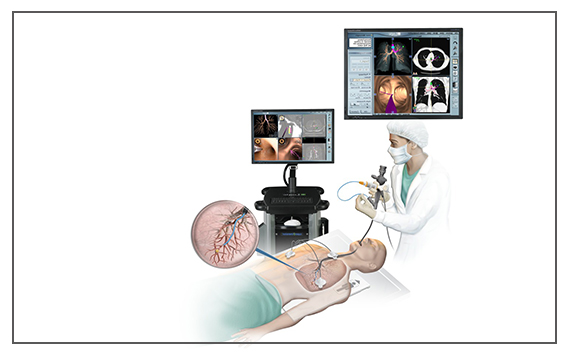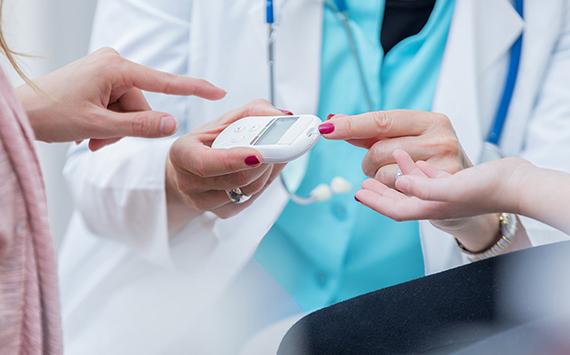WHAT IS BRONCHOSCOPY?
This is a procedure in which a flexible endoscope (camera) called a bronchoscope is passed through the mouth or nose into the trachea, this allows inspection of the trachea (windpipe) and bronchi (airways).

This is a procedure in which a flexible endoscope (camera) called a bronchoscope is passed through the mouth or nose into the trachea, this allows inspection of the trachea (windpipe) and bronchi (airways).
This test is performed to investigate the airways and It gives a clear view of the lining of the bronchi allowing the bronchoscopist to make a diagnosis. The tube also has a small channel to collect tissue samples from your lung that can be used to diagnose a disease.
Specialized technique performed during the procedure are bronchial washings, Bronchial lavage, Endobronchial biopsy, Brush Biopsy and Needle Aspiration (using a special needle to obtain samples with suction) to get a definite diagnosis.
The benefits of the procedure is that it allows inspection of the airways at the same time you can take samples for diagnosis of infection or other lung conditions.

Polysomnography (PSG) is a study or test done while you’re fully asleep. A doctor will observe you as you sleep, record data about your sleep patterns, and may identify any sleep disorders.
During a PSG, the doctor will measure the following to help chart your sleep cycles:A sleep study registers your body’s shifts between the stages of sleep, which are rapid eye movement (REM) sleep, and non-rapid eye movement (non-REM) sleep. Non-REM sleep is divided into “light sleep” and “deep sleep” phases.
During REM sleep, your brain activity is high, but only your eyes and breathing muscles are active. This is the stage in which you dream. Non-REM sleep involves slower brain activity.
A person without a sleep disorder will switch between non-REM and REM sleep, experiencing multiple sleep cycles per night.
Observing your sleep cycles, along with your body’s reactions to the changes in these cycles, can help identify disruptions in your sleep patterns.
A doctor can use a polysomnography to diagnose sleep disorders. It often evaluates for symptoms of sleep apnea, a disorder in which breathing constantly stops and restarts during sleep.
The symptoms of sleep apnea include:
A thoracoscopy is a procedure in which an endoscope is passed into the chest cavity to visualize the plerural space . This helps in obtaining the sample of tissue (biopsy) from the lining of the chest cavity or lung and at the same time excess fluid(pus) in the chest cavity can be drained .

Diabetes is a disease that occurs when your blood glucose, also called blood sugar, is too high. Blood glucose is your main source of energy and comes from the food you eat. Insulin, a hormone made by the pancreas, helps glucose from food get into your cells to be used for energy, Sometimes your body doesn't make enough-or any-insulin or doesn't use insulin well. Glucose then stays in your blood and doesn't reach your cells.
Overtime, having too much glucose in your blood can cause health problems. Although diabetes has no cure, you can take steps to manage your diabetes and stay healthy.
Blood tests at inititial phase for evaluation of your insulin resistance. Your body mass analysis initial phase and then monthly to see the progress.